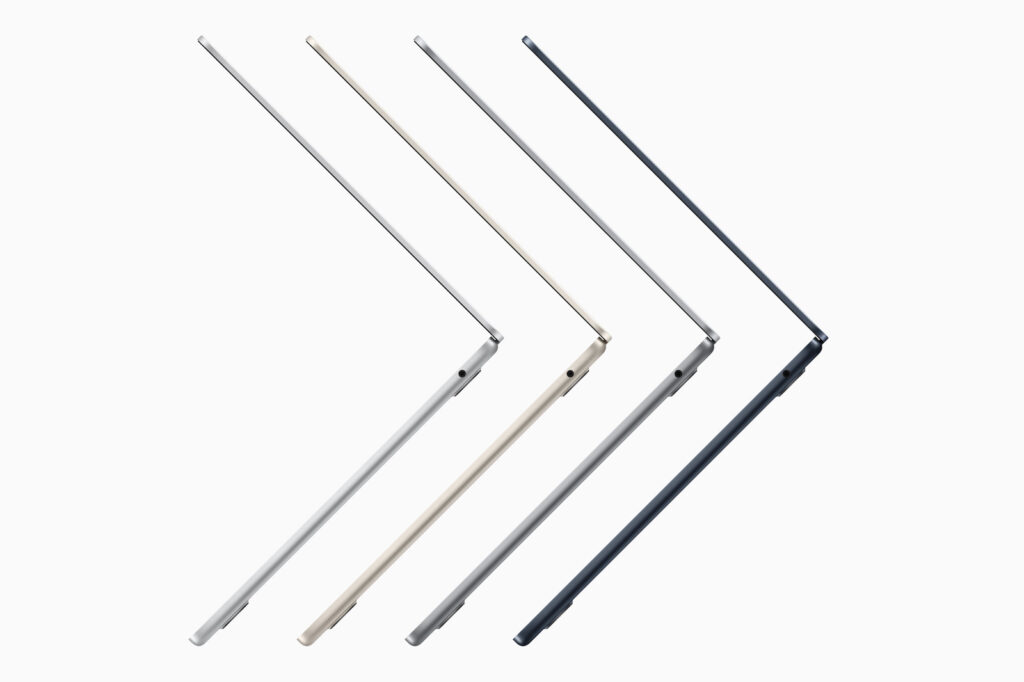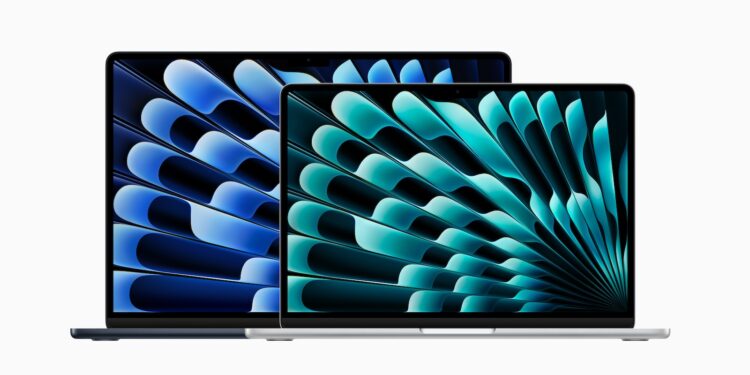The MacBook Air has been a popular choice for users looking for a lightweight, powerful, and affordable notebook for years. But new information about Apple's plans to introduce OLED displays casts a less positive light on the device's future. While other Apple products are moving to the latest display technology more quickly, MacBook Air users will have to wait longer - and even then, they will be missing a crucial upgrade.
The MacBook Air is known for its balance between price and performance. With its slim design and powerful processors, it has established itself as an indispensable product for many users in recent years. However, it lags behind the MacBook Pro when it comes to introducing new technologies. The current OLED roadmap shows that Apple will probably continue this strategy. For MacBook Air fans, the outlook is sobering.
Long wait for OLED
Market researchers at Omdia have published a timeline outlining Apple's plans for introducing OLED displays in various products by 2030. While the MacBook Pro will switch to OLED in 2026, the MacBook Air isn't scheduled to follow until 2028. This puts it two years behind the Pro model. Furthermore, the MacBook Air is one of the last Apple devices to be equipped with OLED. Interestingly, even the iPad models will get OLED displays much sooner:
- The iPad mini is expected to switch to OLED as early as 2026.
- The iPad Air will follow in 2027.
This delay shows that Apple is placing the MacBook Air further behind in terms of technology, even though it is one of the brand's best-selling devices. OLED displays offer advantages such as more intense colors, better contrast and greater energy efficiency. The fact that MacBook Air users have to wait so long for this is a clear disadvantage.
The unpopular notch remains
Even if the MacBook Air finally gets an OLED display in 2028, it will still retain the familiar notch. This cutout, which leaves space for the camera, is considered distracting by many. In contrast, the MacBook Pro, with the OLED upgrade in 2026, will get rid of the notch and switch to a more modern solution with a punch-hole camera. The fact that Apple is keeping the notch on the MacBook Air shows how clearly the company wants to differentiate its product lines. While the MacBook Pro will be equipped with new technologies and an improved design, the MacBook Air will stick with the current solution. This is disappointing news for users hoping for a modern and unobtrusive display.
Reasons and possible changes
One reason could be that OLED displays are more expensive to produce in larger quantities for more affordable devices like the MacBook Air. Another factor could be Apple's conscious decision to make the Pro model more attractive through technological advantages. Of course, timelines and strategies can still change between now and 2028. Nevertheless, the current reports show a clear direction: Apple is prioritizing its high-end products while the MacBook Air is lagging behind in terms of innovation.

The Future of the MacBook Air: Compromises in Technology and Design
The new information on the MacBook Air's OLED roadmap shows that the device continues to be on the back burner when it comes to the introduction of new technologies. Not only will users have to wait longer for an OLED display, but the unpopular notch will also remain. This is a disappointment for many who value the MacBook Air as a practical and modern device. If a state-of-the-art display is important to you, upgrading to the MacBook Pro or waiting for potential changes in Apple's strategy might be worth considering. But despite these drawbacks, the MacBook Air remains a solid choice for anyone looking for a reliable notebook at an affordable price. The decision ultimately depends on your priorities. Looking for new accessories? Visit our Amazon Storefront – there you'll find a variety of products from leading manufacturers, including products for HomeKit and more! (Image: Apple)
- When will the M4 MacBook Air be released? All information here
- When will Apple stop supporting Intel Macs?
- Apple iMac: Is the larger all-in-one desktop coming back?
- Apple sets new standards – All Macs start with 16 GB RAM





